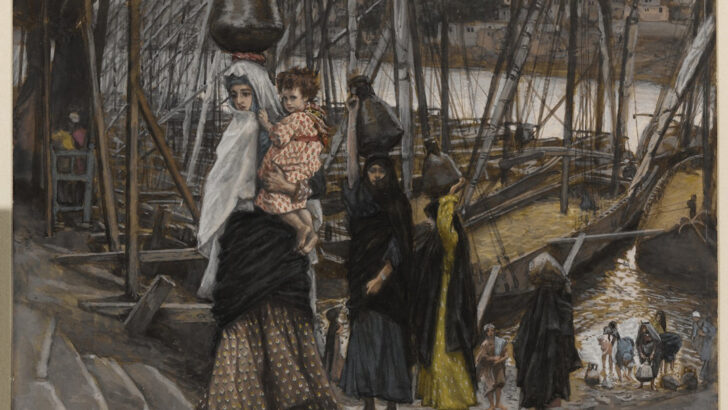Every year it has been customary on these books pages to recall aspects of the accounts of the Nativity given in two of the Gospels. Each year, surprisingly enough, there always seems something new to say.
This is as true this year as in all those earlier years; all 2,000 or so of them going back to the 1st Century. For this is the one time of the year perhaps when the Books Pages can focus not on a book, but on the book, that is to say the New Testament.
This year my interest focused on the identity of the Magi. Previously I had always seen these ‘wise men’ as Chaldean philosophers of some kind. But now I have moved away from the view that rather than being Chaldean astronomers, experts in the movements of the stars for proto-scientific reasons, they were actually Jewish astrologers, members of the large Jewish community then settled in Mesopotamia.
This would make more of their query to King Herod: “Where is he who has been born king of the Jews? For we saw his star when it rose in the east and have come to worship him.” They were not pagans, but were Jews themselves, seeking out the Messiah.
This serves as reminder that the Jews have always been a dispersed people, long before the diaspora, who reached in their travels nations as far apart as China and West Africa, while retaining their unique identity. They were truly the first citizens of the world.
Pilgrims
Every year in centuries past Christian pilgrims would visit Bethlehem at the Christmas season as pilgrims. But this year the town was almost a dead place. This naturally gives rise to concerns about what may happen to the town in the coming year.
But whatever comes to pass, things will not be the same as they were for Christians in the region.
In the present conflict I was greatly saddened to see that the only Catholic church in Gaza, which I wrote about recently, had come under attack. A grandmother and a small girl were shot dead by a sniper (supposedly a regular member of the IDF) overlooking the church and its precincts. The Catholic Patriarch of Jerusalem has protested after the fact.
Other chapters in Matthew read differently too this year. The passage which the author of Matthew quotes from the prophet Jeremiah for instance: “A voice was heard in Ramah, weeping and loud lamentation, Rachel weeping for her children; she refused to be comforted, because they are no more.”
Renaissance
In the Renaissance some came to believe that up to 20,000 children had been killed on the orders of Herod. Later sceptical historians settled on much, much lower numbers; indeed I was of the opinion, given the size of the town, the high incidence of perinatal death, and other social facts, that maybe only a dozen or 20 had been killed.
Other historians think the whole incident an invention. Could a Middle Eastern ruler, they ask, really kill such huge numbers of children?
It is likely that in the coming year few if any pilgrims will want to visit the Holy Land. Their piety does not call for them to place themselves in danger.
But turning their thoughts to where they might go, many Christians of all kinds are already taking organised pilgrimages to Turkey, the Asia Minor of Apostolic times. Others favour Greece or the further travels there of St Paul.
But then there is too the call of Rome itself which appeals to many.
Egypt
But worth thinking about is a pilgrimage to Egypt in the steps of the Holy Family on their flight into safety. The early Christians developed an itinerary of places over the length of the Nile, where Mary and Joseph and the Holy Child rested, lingered a while, or actually lived for a time.
I wrote about this a few years ago, and plan to write about again a little later in the year. Even historians who have doubts about the historicity of the Flight into Egypt accept that these places represent locations where Jews and early Christians lived.
In this time of war the country where the Holy Family found refuge and peace has a great attraction for many.
The Flight into Egypt was a theme which appealed to many great painters of the past, such as Rembrandt, one of whose images can be seen in our own National Gallery. Tissot’s Sojourn in Egypt shows Mary with Jesus aged two collecting water for the home from the Nile.
But perhaps things will change, and in the months to come, peace may come again to the Holy Land and there will be no further need for a special Wartime Cabinet to run things, and a new Israeli government will once again welcome Christian pilgrims wholeheartedly to the Holy Land.


 Peter Costello
Peter Costello Sojourn in Egypt (gouache c. 1889), by JJ Tissot.
Sojourn in Egypt (gouache c. 1889), by JJ Tissot.